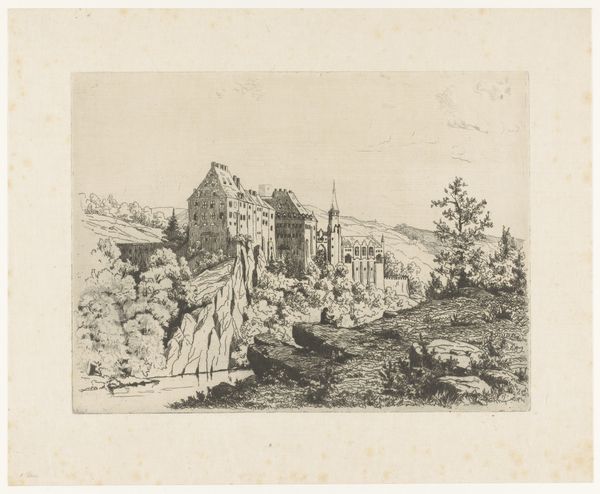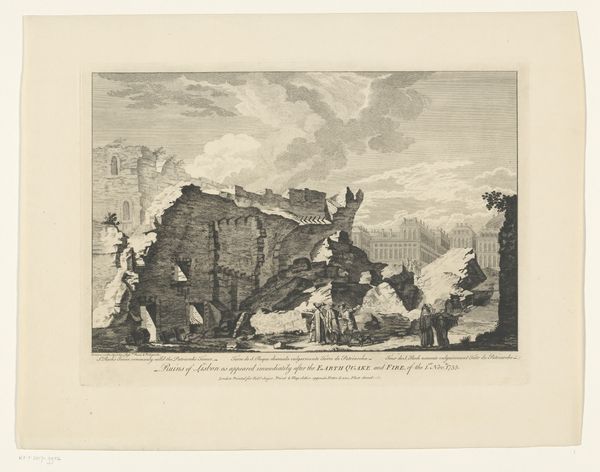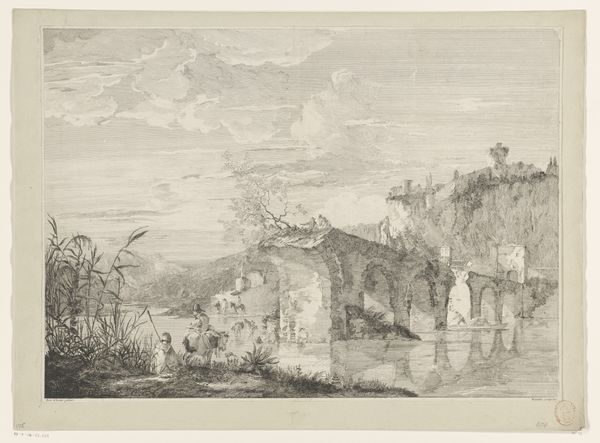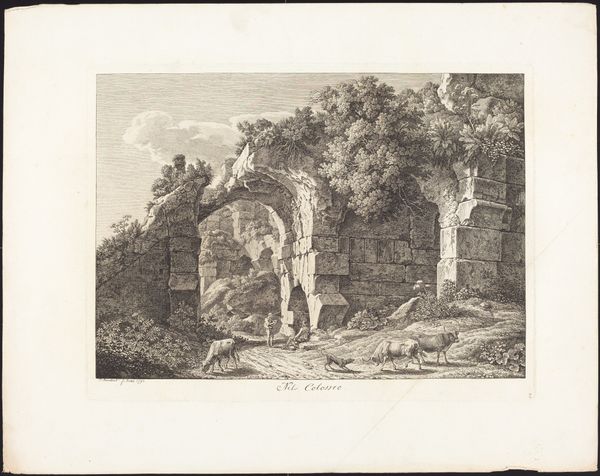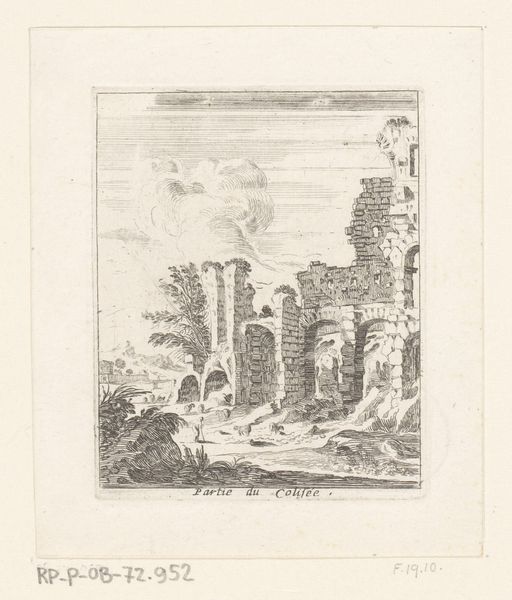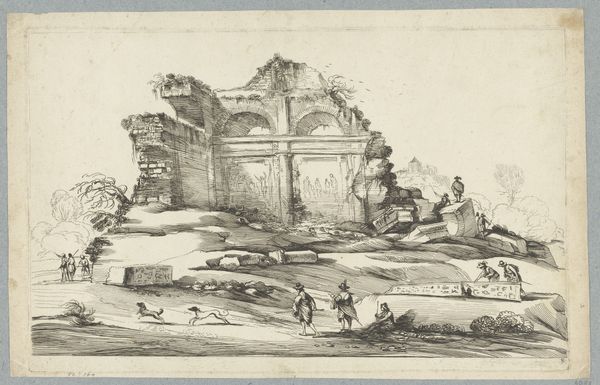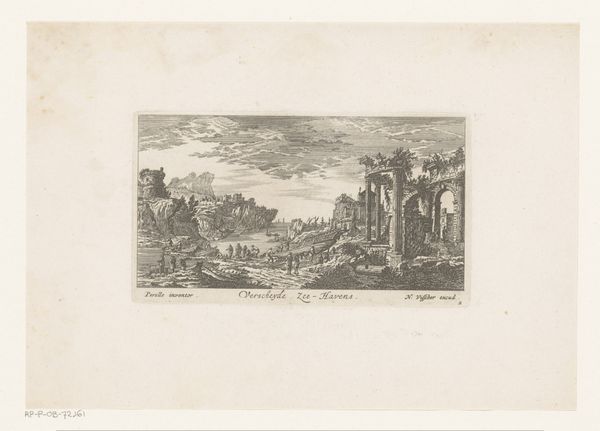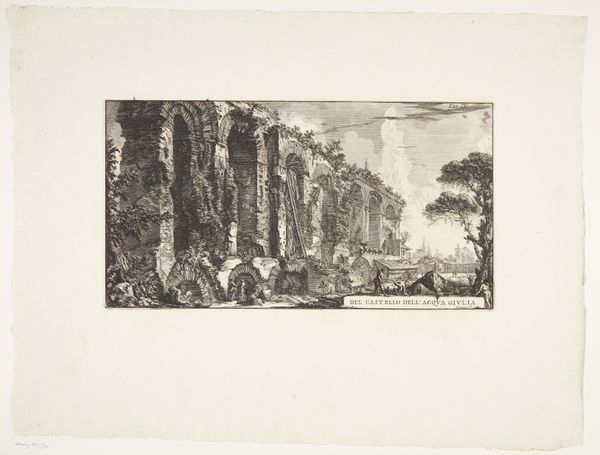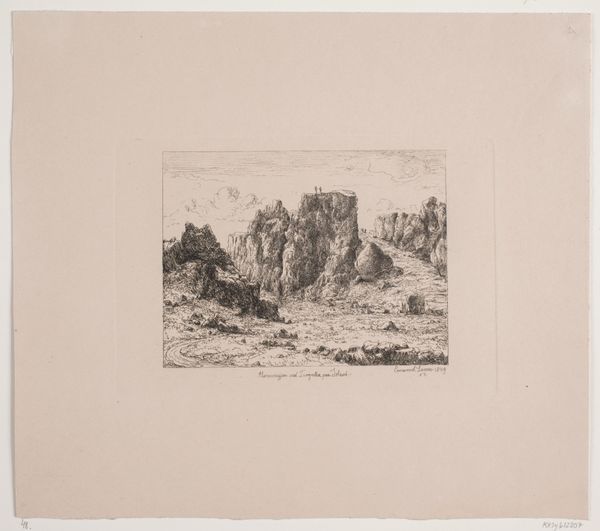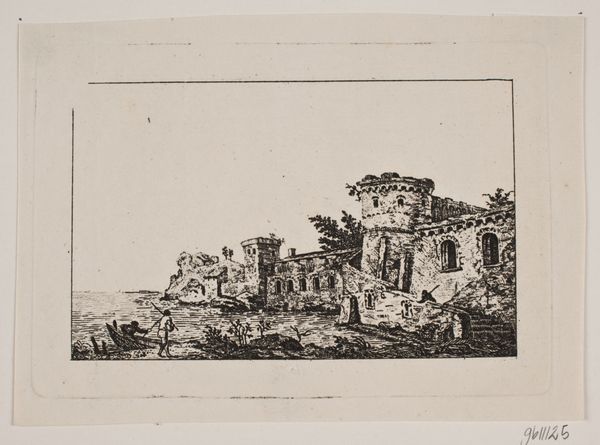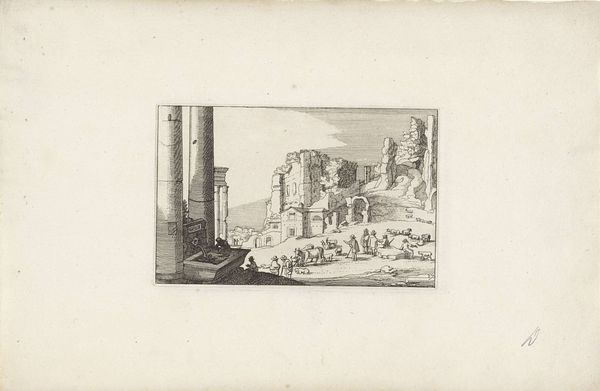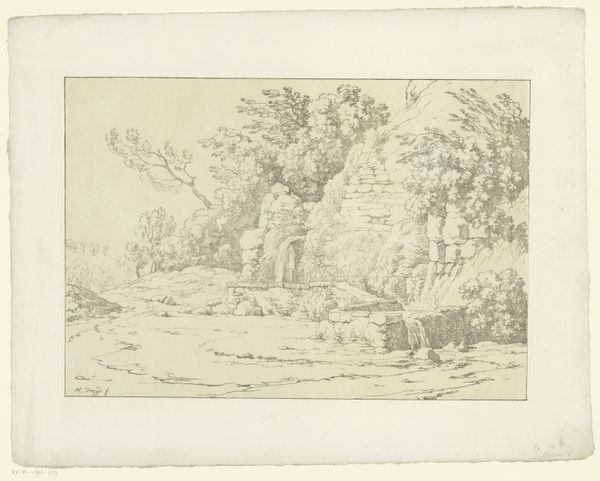
drawing, print, etching, engraving
#
drawing
#
neoclacissism
# print
#
etching
#
landscape
#
ancient-mediterranean
#
history-painting
#
engraving
Dimensions: 9 3/8 x 14 1/16 in. (23.81 x 35.72 cm) (plate)16 1/8 x 21 1/2 in. (40.96 x 54.61 cm) (sheet)
Copyright: Public Domain
Curator: This is Giovanni Battista Piranesi's "Reliquiae Mausolei Augusti," an etching and engraving dating from around the 18th century and held here at the Minneapolis Institute of Art. Editor: Immediately, the composition strikes me as quite dramatic. There's a sense of imposing decay and the insignificance of human figures in relation to historical weight and architectural hubris. Curator: Absolutely. Piranesi was fascinated by Rome's ancient ruins and his works like this one fueled the Neoclassical movement's fascination with the grandeur of antiquity. The piece highlights a specific monument and demonstrates Piranesi’s unique capacity to document and imagine in a single image. Editor: But it's not a neutral documentation, is it? Look at the scale. Piranesi amplifies the ruin's immensity, dwarfing those figures at the base, almost overwhelming the viewer with the power of history and, implicitly, empire. Who gets to control this narrative of ancient splendor, and to what end? Curator: I see your point. The engraving’s dramatic scale aligns with the contemporary view of the late 1700s and its interest in antiquity’s political power. In a sense it asks how do civilizations come and go, and what kind of message can be gleaned from Rome's own collapse? Editor: It definitely evokes that feeling of grand empires falling into ruin. But more than just a cautionary tale, I wonder about its place within the wider colonial project. How did such romanticized, powerful images shape the perception—and exploitation—of ancient sites, feeding into Western narratives of dominance and cultural superiority? The monument serves as a testament to not just what Rome had done, but to what other countries, implicitly, could do if the moment arose. Curator: A compelling thought. Piranesi likely sought primarily to artistically engage with and capture these forms— the image does however also operate within broader historical and political currents. The Neoclassical movement definitely benefited from colonialism as this artistic and cultural style benefited by accessing "antiquity." Editor: It makes you think about whose history is amplified and whose is quietly erased in these powerful images, doesn’t it? These gorgeous "views" of decay simultaneously document history while making room for future ones to occur. Curator: Indeed. Understanding the layered context behind such works opens up new avenues for interpreting their artistic, cultural and even political meanings. Editor: Exactly, it’s a conversation, not just a static view of the past. It challenges how we position ourselves in relation to what came before.
Comments
No comments
Be the first to comment and join the conversation on the ultimate creative platform.
